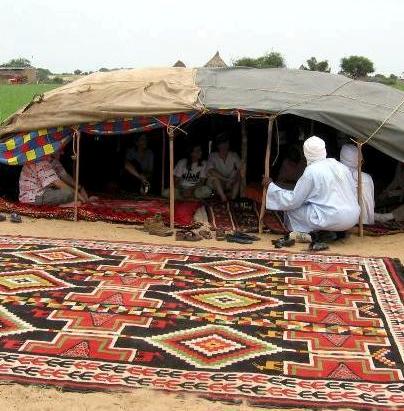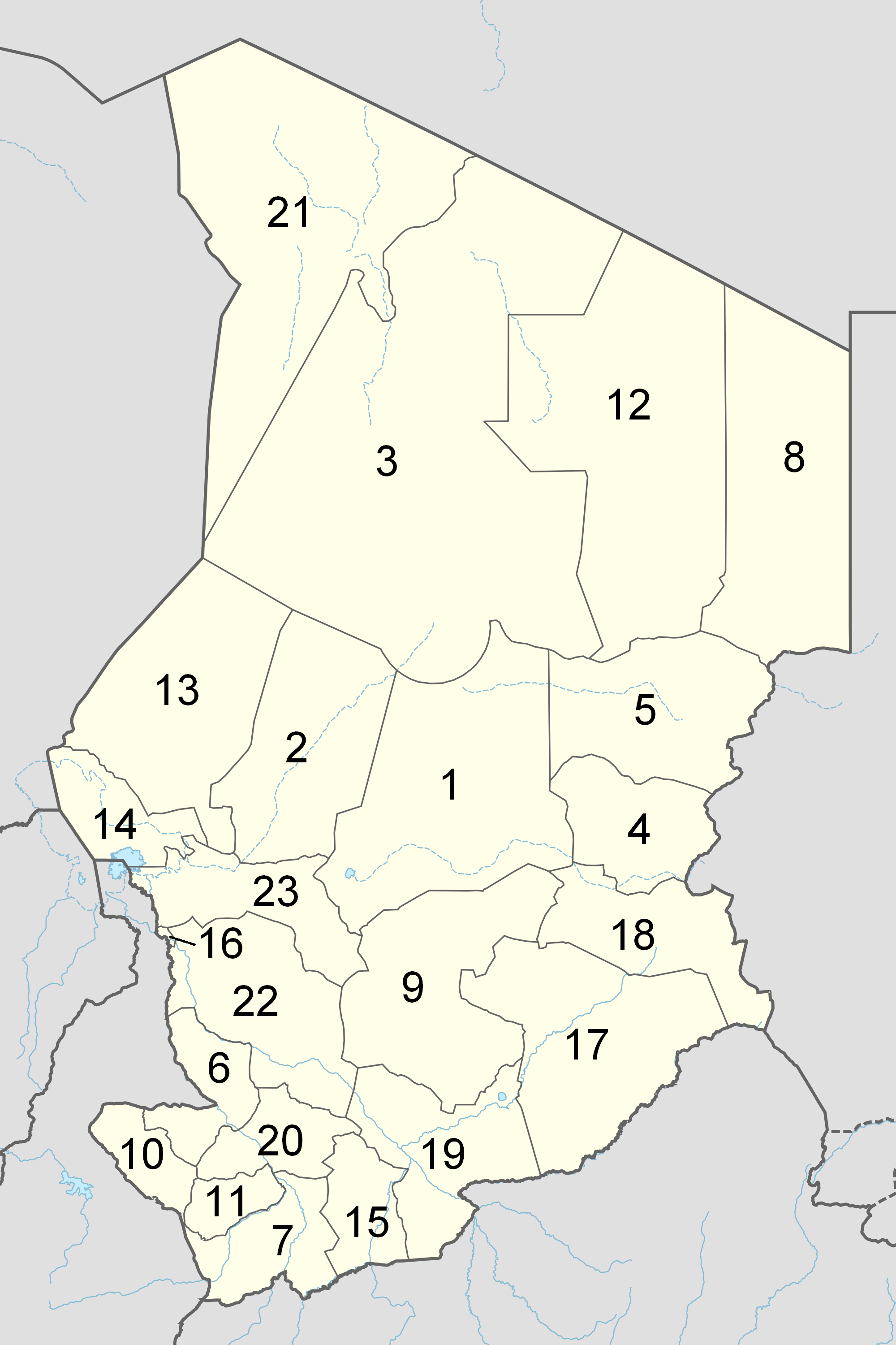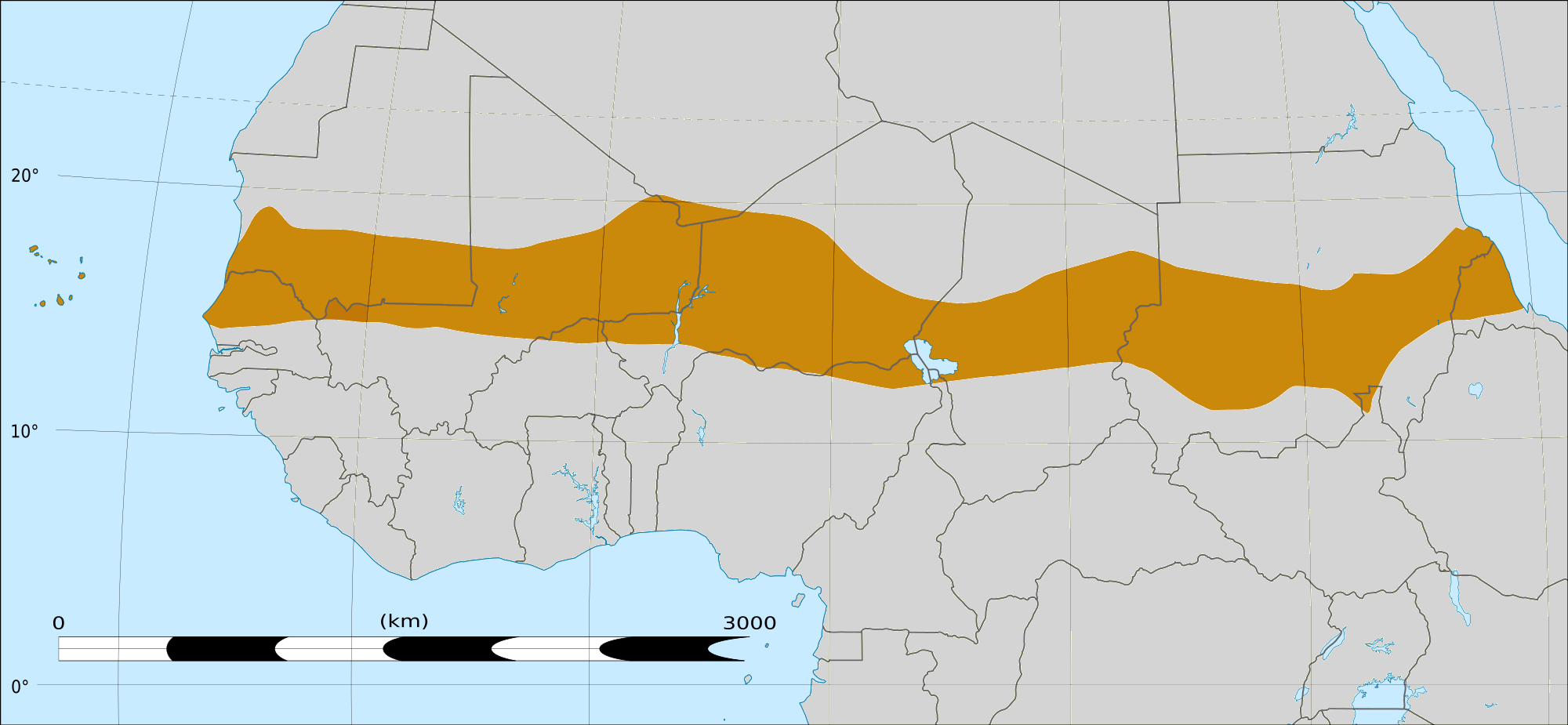|
Bahr El Gazel (province Of Chad)
Barh El Gazel (, ) is one of the 23 provinces of Chad. The province's name may also be written as Barh El Gazal or Bahr el Gazel. Its capital is the town of Moussoro. The province was created in 2008 from the former Barh El Gazel Department of the Kanem Region. On , a new ordinance divided Chad into 23 provinces, 107 departments, and 377 communes. The names of the former regions remained the same but were now called . Geography The province borders Borkou Region to the north, Batha Region to the east, Hadjer-Lamis Region to the south, and Kanem Region to the west. The province is predominantly grassland, merging into the Sahara Desert in the north. Settlements Moussoro is the provincial capital; other major settlements include Chadra, Dourgoulanga, Michemiré, Toumia, Mandjoura, Islet, and Salal. Demographics As per the census of 2009, the population of the province was 260,865, 46.3% female. The average size of household as of 2009 is 5.90: 5.90 in rural households and ... [...More Info...] [...Related Items...] OR: [Wikipedia] [Google] [Baidu] |
Provinces Of Chad
The Chad, Republic of Chad is divided into 23 provinces. Chad was divided into regions in 2002. It was previously divided into prefectures of Chad, prefectures, and then departments of Chad, departments. On , a new ordinance divided Chad into 23 provinces, 107 departments, and 377 communes. The names of the former regions remained the same but were now called . On , a new ordinance further divided the 23 regions into 120 departments and 454 sub-prefectures. Current provinces This is a list of the provinces of Chad (called regions before 2018), with official population figures from the 2009 census, and estimated population figures for mid 2023. History From independence in 1960 until 1999 it was divided into prefectures of Chad, 14 ''préfectures''. These were replaced in 1999 by departments of Chad, 28 ''départements''. The country was reorganized again in 2002 to produce 18 ''régions''. In 2008, a further four ''régions'' were created, increasing the number to 22. En ... [...More Info...] [...Related Items...] OR: [Wikipedia] [Google] [Baidu] |
Michemiré
Michemiré is a sub-prefecture of Bahr el Gazel in Chad Chad, officially the Republic of Chad, is a landlocked country at the crossroads of North Africa, North and Central Africa. It is bordered by Libya to Chad–Libya border, the north, Sudan to Chad–Sudan border, the east, the Central Afric .... References Populated places in Chad {{Chad-geo-stub ... [...More Info...] [...Related Items...] OR: [Wikipedia] [Google] [Baidu] |
Sahel Drought
The Sahel region of Africa has long experienced a series of historic droughts, dating back to at least the 17th century. The Sahel region is a climate zone sandwiched between the Sudanian Savanna to the south and the Sahara desert to the north, across West and Central Africa. While the frequency of drought in the region is thought to have increased from the end of the 19th century, three long droughts have had dramatic environmental and societal effects upon the Sahel nations. Famine followed severe droughts in the 1910s, the 1940s, and the 1960s, 1970s and 1980s, although a partial recovery occurred from 1975-80. The most recent drought occurred in 2012. While at least one particularly severe drought has been confirmed each century since the 17th century, the frequency and severity of recent Sahelian droughts stands out. Famine and dislocation on a massive scale—from 1968 to 1974 and again in the early and mid-1980s—was blamed on two spikes in the severity of the 1960-1980 ... [...More Info...] [...Related Items...] OR: [Wikipedia] [Google] [Baidu] |
2010 Sahel Famine
A large-scale, drought-induced famine occurred in Africa's Sahel region and many parts of the neighbouring Sénégal River Area from February to August 2010. It is one of many famines to have hit the region in recent times. The Sahel is the ecoclimatic and biogeographic zone of transition between the Sahara desert in the north of Africa and the Sudanian savannas in the south, covering an area of 3,053,200 square kilometres. It is a transitional ecoregion of semi-arid grasslands, savannas, steppes, and thorn shrublands. The neighbouring Sénégal River Area contains various vegetation types and covers parts or all of Mauritania, Mali, Senegal and Guinea. It has also had very low rainfall over the last year according to the UN, NGOs and the Senegal River Basin Development Authority. [...More Info...] [...Related Items...] OR: [Wikipedia] [Google] [Baidu] |
Sous-préfecture
A subprefecture is an administrative division of a country that is below prefecture or province. Albania There are twelve Albanian counties or prefectures, each of which is divided into several districts, sometimes translated as subprefectures. :Examples: District of Korçë, District of Sarandë Brazil In Brazil the subprefectures () are administrative divisions of some big cities, such as São Paulo and Rio de Janeiro. The head of a subprefecture, the ''subprefeito'', is indicated by the municipality's mayor (in Brazil called ''prefeito''). In São Paulo there are 32 subprefectures. The largest in total area, Parelheiros, covers 353.5 km2, and the most populous, Capela do Socorro, has more than 600,000 inhabitants. Burkina Faso Example: Djibasso Subprefecture Central African Republic Chad Examples: N'Gouri Subprefecture, Massakory Subprefecture China It was used in Qing dynasty. Called ''ting'' (廳 or 厅) in Chinese, it is also on the same level as a dep ... [...More Info...] [...Related Items...] OR: [Wikipedia] [Google] [Baidu] |
Chef-lieu
An administrative centre is a seat of regional administration or local government, or a county town, or the place where the central administration of a commune, is located. In countries with French as the administrative language, such as Belgium, Luxembourg, Switzerland and many African countries, a (, , ) is a town or city that is important from an administrative perspective. Algeria The capitals of Algerian provinces, districts, and communes are called . Belgium The in Belgium is the administrative centre of each of the ten provinces of Belgium. Three of these cities also give their name to their province (Antwerp, Liège and Namur). France The of a French department is known as the prefecture (). This is the town or city where the prefect of the department (and all services under their control) are situated, in a building also known as the prefecture. In every French region, one of the departments has preeminence over the others, and the prefect carries the title of ... [...More Info...] [...Related Items...] OR: [Wikipedia] [Google] [Baidu] |
BEG Moussoro2
Beg may refer to: * Begging Titles * Baig (also ''Bey''), an ancient Turkic administrative title (chieftain, governor etc.) ** Baig (surname) ** Begzada (name style), son of Beg ** Beg Khan, a combination of Beg and Khan titles ** Beg (surname) Arts and entertainment * ''Beg'' (1970 film), a Soviet film * ''Beg'' (2011 film), a film starring Tony Todd * "Beg", a song by All Saints from ''All Saints'', 1997 * "Beg", a song by Evans Blue from ''The Melody and the Energetic Nature of Volume'', 2006 * "Beg", a song by Jack & Jack, 2017 * "Beg", a song by M.I from '' The Chairman'', 2014 * "Beg", a song by Saliva from ''Every Six Seconds'', 2001 Other uses * ''Beg'' (dinosaur), a ceratopsian dinosaur * Beg Ferati (born 1986), Swiss footballer See also * BEG (other) * Begg Begg (from Irish language, Gaelic ''Beag'': little, young, small of stature) is a Scottish and Irish surname. It may also be a variant of the surname Beg (surname), Beg. Notable people with the surnam ... [...More Info...] [...Related Items...] OR: [Wikipedia] [Google] [Baidu] |
Peanut
The peanut (''Arachis hypogaea''), also known as the groundnut, goober (US), goober pea, pindar (US) or monkey nut (UK), is a legume crop grown mainly for its edible seeds. It is widely grown in the tropics and subtropics by small and large commercial producers, both as a grain legume and as an oil crop. Atypically among legumes, peanut pods geocarpy, develop underground; this led botanist Carl Linnaeus to name peanuts ''hypogaea'', which means "under the earth". The peanut belongs to the botanical family Fabaceae (or Leguminosae), commonly known as the legume, bean, or pea family. Like most other legumes, peanuts harbor symbiotic nitrogen-fixing bacteria in root nodules, which improve soil fertility, making them valuable in crop rotations. Despite not meeting the Botanical nut, botanical definition of a nut as "a fruit whose ovary (botany), ovary wall becomes hard at maturity," peanuts are usually categorized as nuts for culinary purposes and in common English. Some pe ... [...More Info...] [...Related Items...] OR: [Wikipedia] [Google] [Baidu] |
Cotton
Cotton (), first recorded in ancient India, is a soft, fluffy staple fiber that grows in a boll, or protective case, around the seeds of the cotton plants of the genus '' Gossypium'' in the mallow family Malvaceae. The fiber is almost pure cellulose, and can contain minor percentages of waxes, fats, pectins, and water. Under natural conditions, the cotton bolls will increase the dispersal of the seeds. The plant is a shrub native to tropical and subtropical regions around the world, including the Americas, Africa, Egypt and India. The greatest diversity of wild cotton species is found in Mexico, followed by Australia and Africa. Cotton was independently domesticated in the Old and New Worlds. The fiber is most often spun into yarn or thread and used to make a soft, breathable, and durable textile. The use of cotton for fabric is known to date to prehistoric times; fragments of cotton fabric dated to the fifth millennium BC have been found in the Indus Valley civilizat ... [...More Info...] [...Related Items...] OR: [Wikipedia] [Google] [Baidu] |
Ethnologue
''Ethnologue: Languages of the World'' is an annual reference publication in print and online that provides statistics and other information on the living languages of the world. It is the world's most comprehensive catalogue of languages. It was first issued in 1951 and is now published by SIL International, an American evangelical Parachurch organization, Christian non-profit organization. Overview and content ''Ethnologue'' has been published by SIL Global (formerly known as the Summer Institute of Linguistics), a Christian linguistics, linguistic service organization with an international office in Dallas, Texas. The organization studies numerous minority languages to facilitate language development, and to work with speakers of such language communities in translating portions of the Bible into their languages. Despite the Christian orientation of its publisher, ''Ethnologue'' is not ideologically or theologically biased. ''Ethnologue'' includes alternative names and Exo ... [...More Info...] [...Related Items...] OR: [Wikipedia] [Google] [Baidu] |
Kanembu People
The Kanembu are an ethnic group of Chad, generally considered the modern descendants of the Kanem–Bornu Empire. The Kanembu are estimated to number 1,815,270 people, located primarily in Chad's Lac Prefecture but also in Chari-Baguirmi and Kanem prefectures. They speak the Kanembu language, which the Kanuri language is closely related to, with many speaking Arabic and sometimes nowadays French as a second language. Etymology The word ''Kanembu'' means "the people 'bu''of Kanem." History For over a thousand years the Kanem–Bornu Empire was a dominant power over central North Africa. Its sphere of influence covered Eastern Nigeria and Niger, the Northern half of Chad, Cameroon, and Libya. Its inhabitants traded with Egypt and sponsored Islamic schools as far as Alexandria. Its camel caravans reached the Muslim holy cities of Mecca and Medina. Until the beginning of the 1900s and the French conquest of this area, the Kanem-Bornu Empire was the major power in the he ... [...More Info...] [...Related Items...] OR: [Wikipedia] [Google] [Baidu] |



